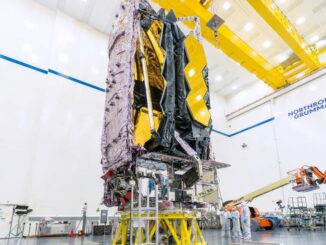
NASA’s James Webb Space Telescope

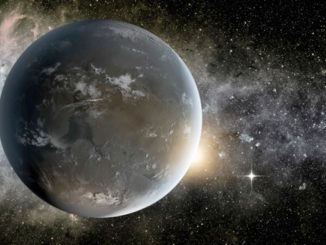
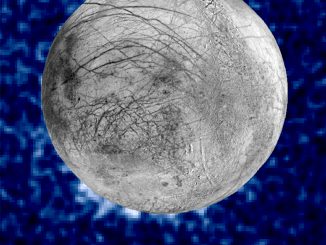
Hubble spots possible water plumes erupting on Jupiter’s moon Europa
Astronomers using NASA’s Hubble Space Telescope have imaged what may be water vapour plumes erupting 125 miles (200 kilometres) off the surface of Jupiter’s moon Europa. Europa has a huge global ocean containing twice as much water as Earth’s oceans, but it is protected by a layer of extremely cold and hard ice of unknown thickness.
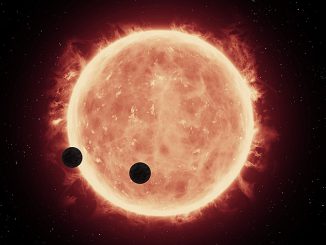
Hubble makes first atmospheric study of Earth-sized exoplanets
Astronomers using the NASA/ESA Hubble Space Telescope have conducted the first search for atmospheres around temperate, Earth-sized planets beyond our solar system. They found indications that increase the chances of habitability on two exoplanets known as TRAPPIST-1b and TRAPPIST-1c orbiting a red dwarf star approximately 40 light-years away.
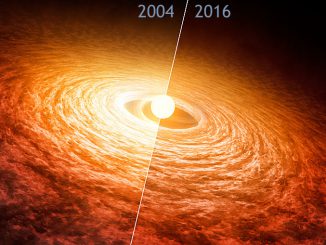
Gluttonous young star may hold clues to planet formation
In 1936, infant star FU Orionis began gobbling material from its surrounding disc of gas and dust with a sudden voraciousness, eating the equivalent of 18 Jupiters in the last 80 years. During a three-month binge, as matter turned into energy, the star became 100 times brighter, heating the disc around it to temperatures of up to 6,650 °C.
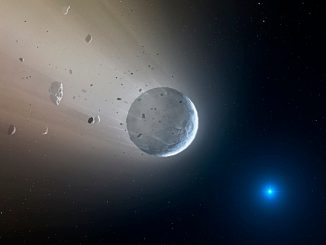
Planet-devouring star reveals possible limestone debris: fossil marine life?
A group of researchers using the W. M. Keck Observatory have discovered a planet-like body that may have been encrusted in limestone and is having its surface layers devoured by its deceased host star. The team found that the rocky material being accreted by the star could be comprised of minerals that are typically associated with marine life processes here on Earth.
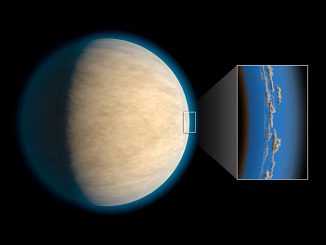
Cloudy days on exoplanets may hide atmospheric water
Water is a hot topic in the study of exoplanets, including “hot Jupiters” close to their parent stars that can reach a scorching 1,100 °C, meaning any water they host would take the form of vapour. Hot Jupiters have been found with water in their atmospheres, but others appear to have none. NASA scientists wanted to find out what the atmospheres of these giant worlds have in common.

Hubble finds universe is expanding faster than expected
When Edwin Hubble discovered nearly 100 years ago that the universe was uniformly expanding in all directions, the finding was a big surprise. Then, in the mid-1990s, another shocker occurred: astronomers found that the expansion rate was accelerating, perhaps due to “dark energy.” Now, the latest measurements of our runaway universe suggest that it is expanding faster than astronomers thought.
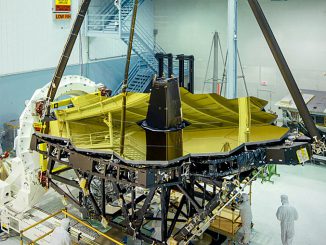
Golden eye: James Webb Space Telescope’s mirror unveiled
On 27 April 2016, engineers unveiled the giant golden mirror of NASA’s James Webb Space Telescope as part of the integration and testing of the infrared telescope. The 6.5-metre mirror is composed of 18 segments the size of a coffee table. Each is made from beryllium, weighs about 46 pounds (20 kg) and coated with vaporised gold to reflect infrared light.
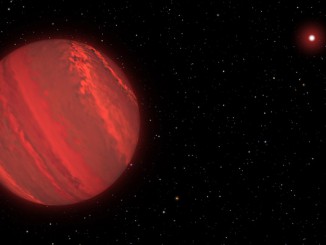
Hubble directly measures rotation of cloudy ‘super-Jupiter’ exoplanet
Astronomers using NASA’s Hubble Space Telescope have measured the rotation rate of an extreme exoplanet by observing the varied brightness in its atmosphere. The planet, called 2M1207b, is about four times more massive than Jupiter and is dubbed a “super-Jupiter.” This is the first measurement of the rotation of a massive exoplanet using direct imaging.
